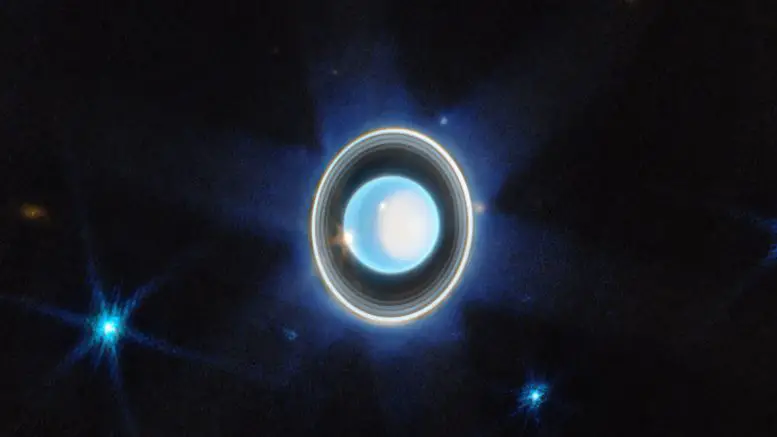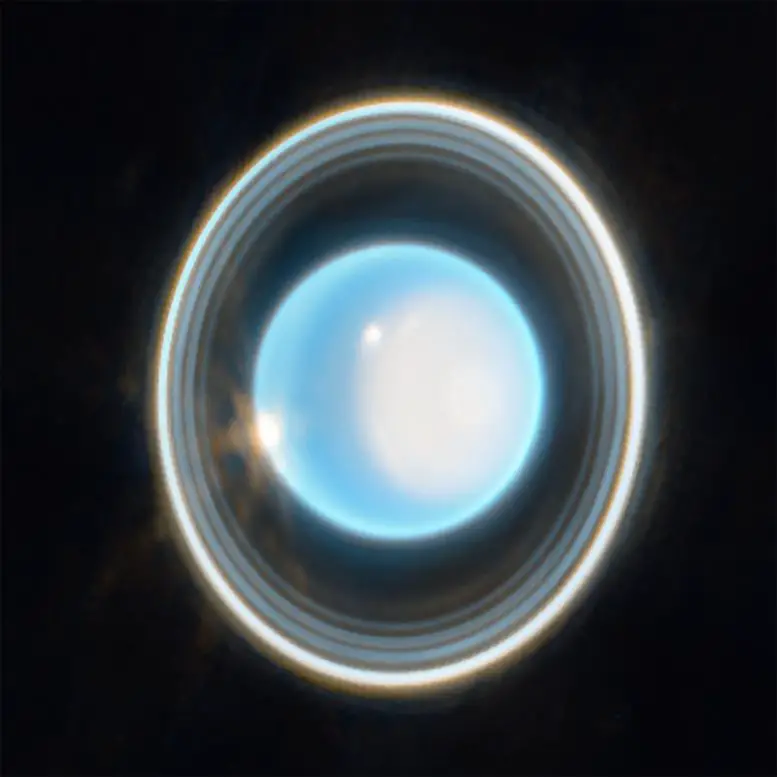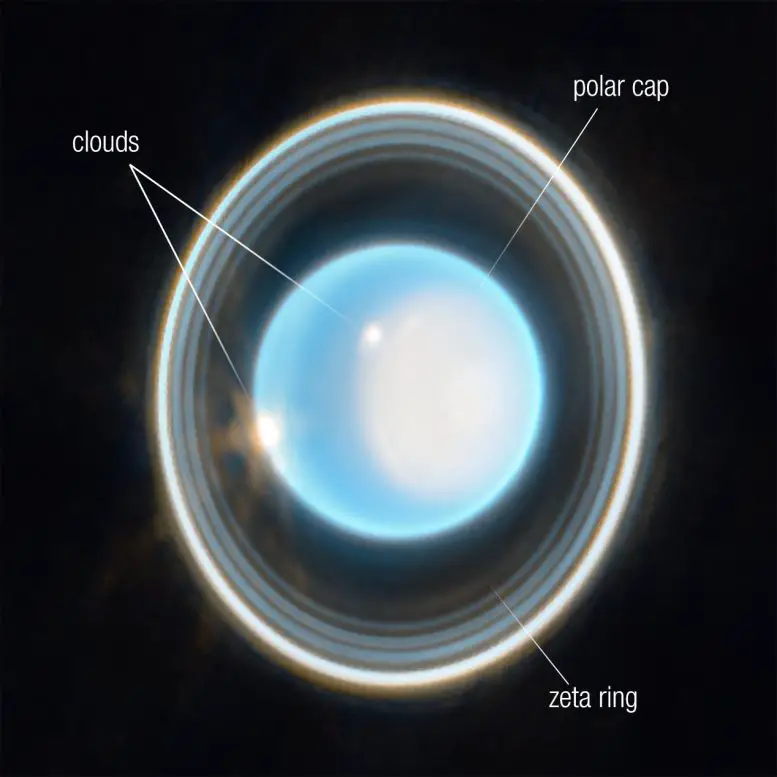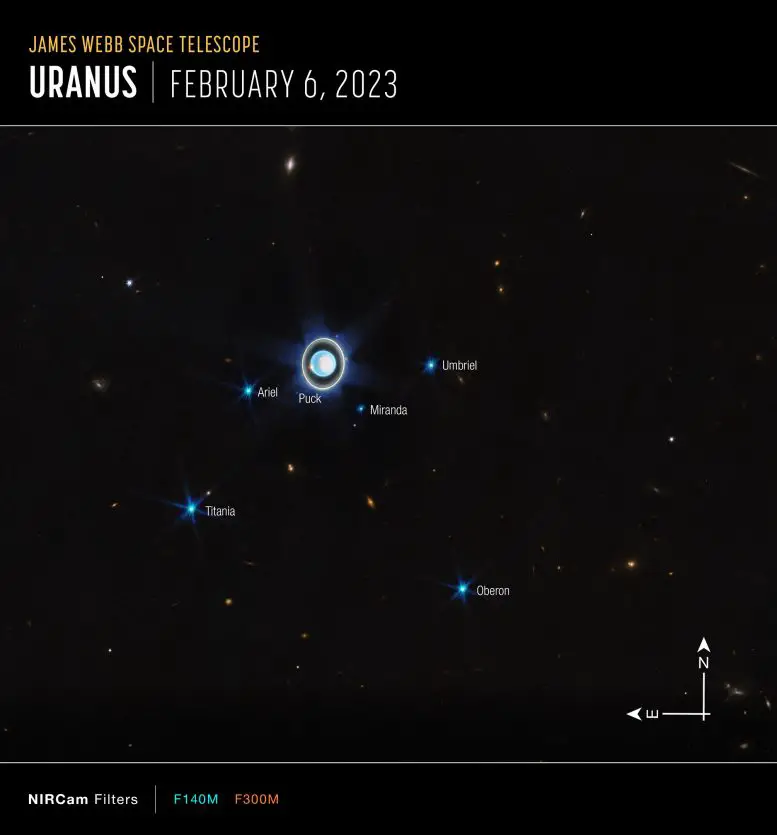The James Webb Space Telescope (JWST), the most powerful and complex space observatory ever built, has delivered its first stunning image of Uranus, the seventh planet from the Sun and the third-largest in the solar system.

Uranus is often overlooked by astronomers and the public alike, due to its faintness and distance from Earth. It is also notoriously difficult to study, as it has a thick atmosphere of hydrogen, helium and methane that obscures its interior and surface features.
However, thanks to JWST’s unprecedented sensitivity and resolution in the infrared range of the electromagnetic spectrum, scientists have been able to peer through the clouds and reveal new details about the ice giant’s structure, weather and seasons.
A New Perspective on Uranus
The new image of Uranus, taken by JWST’s Near-Infrared Camera (NIRCam), shows the planet in false color, highlighting the variations in temperature and composition of its atmosphere. The image was taken on April 1, 2023, when Uranus was about 2.8 billion kilometers (1.7 billion miles) away from Earth and 19.2 astronomical units (AU) from the Sun.

The image reveals several features that have never been seen before or have been poorly resolved by previous observations. For example, the image shows a bright spot near the planet’s south pole, which is currently facing the Sun as Uranus is tilted on its side by 98 degrees. This spot could be a sign of a powerful storm or a vortex in the upper atmosphere, similar to those seen on Neptune.
Another striking feature is the dark band that encircles the planet near its equator. This band is likely caused by a difference in temperature and pressure between the northern and southern hemispheres, creating a jet stream that flows eastward at high speeds. The band also appears to be distorted by waves and eddies that are generated by interactions with other atmospheric currents and Uranus’ moons.
The image also shows faint rings around Uranus, which are composed of dust and ice particles ranging from micrometers to meters in size. The rings are very thin and dark, reflecting only a small fraction of sunlight. They are also difficult to see because they lie in the same plane as Uranus’ equator, which means they are edge-on from Earth’s perspective. However, JWST’s high contrast and angular resolution have allowed it to detect the rings’ scattered light and reveal their structure and orientation.

A Breakthrough for Planetary Science
The new image of Uranus is not only a stunning visual achievement, but also a scientific breakthrough for planetary science. It provides valuable information about Uranus’ atmospheric dynamics, thermal structure, seasonal variations and ring system, which will help researchers understand how the planet formed and evolved over time.
The image also demonstrates JWST’s capabilities for exploring other worlds in our solar system and beyond. JWST is designed to observe objects that are faint, cold or distant, such as exoplanets, brown dwarfs, protoplanetary disks and galaxies in the early universe.

By using its suite of instruments, JWST can measure the spectra, temperatures, compositions, sizes and shapes of these objects, revealing their physical and chemical properties and histories.
JWST is expected to revolutionize our knowledge of the universe and our place in it. The new image of Uranus is just a glimpse of what JWST can do and what it will reveal in the coming years.

